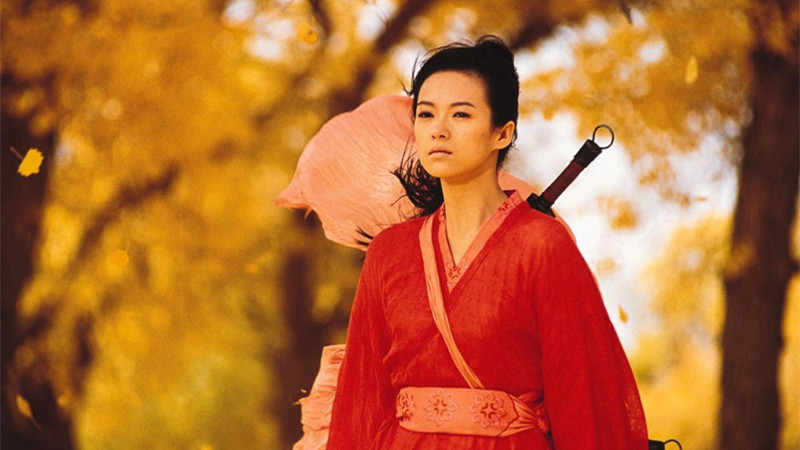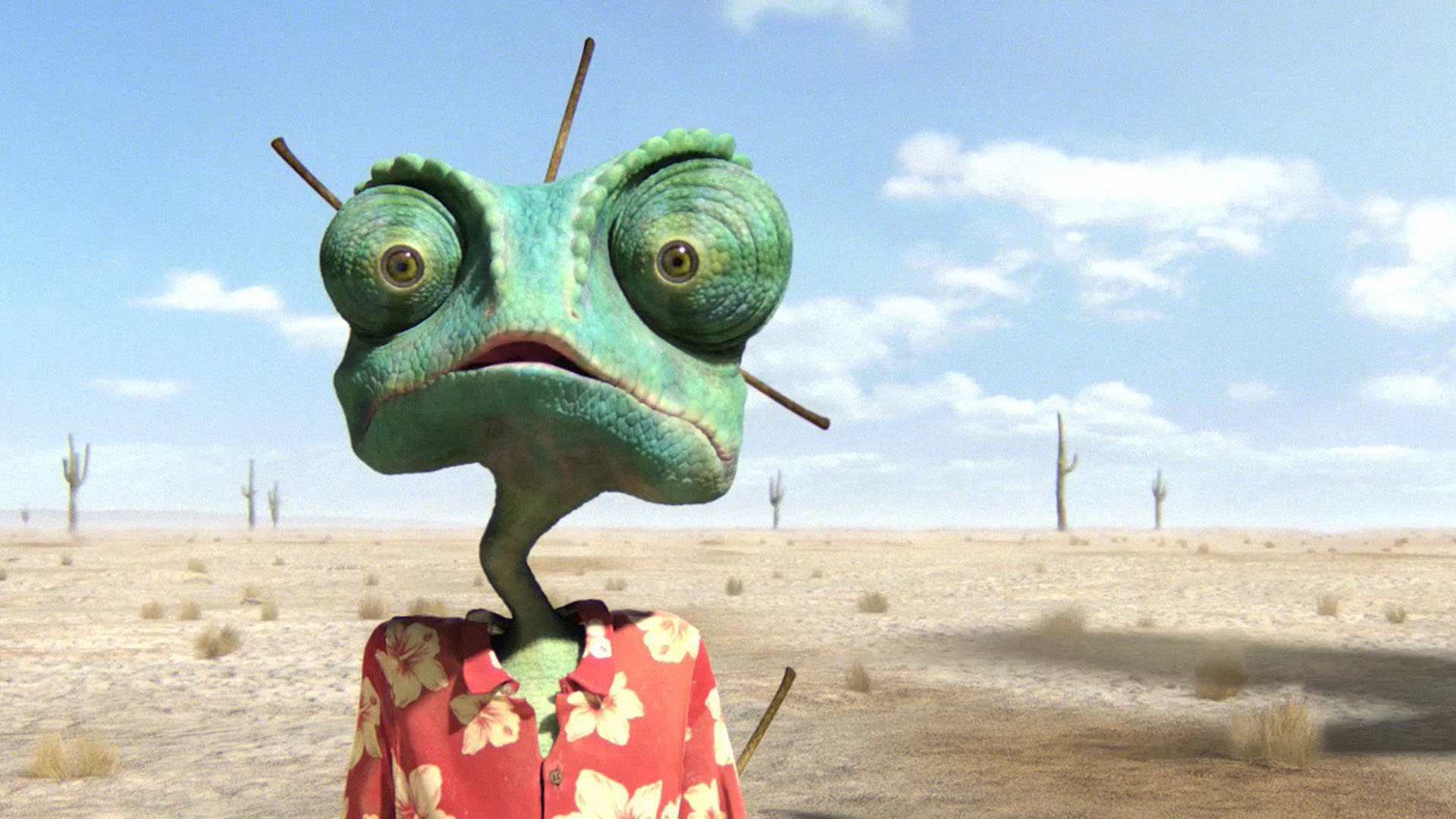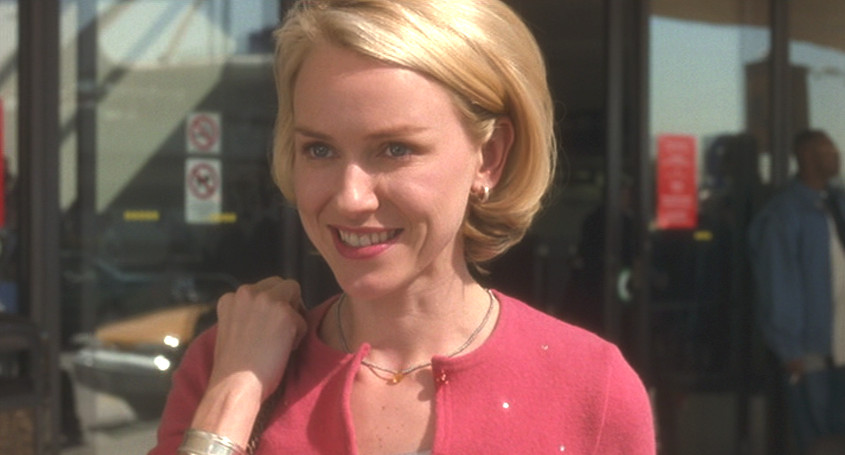5. Drive (Inspired by The Driver)

Walter Hill’s 1978 masterpiece “The Driver” has been an endless well of inspiration for many auteurs, most notably pulp violence king Nicholas Windn Refn for his 2011 film, “Drive.”
Both are stylish exploitation romps with larger than life characters that feature getaway drivers vrooming in fantastic chase scenes. “Drive” follows an expert Hollywood stuntman who also has a second job as a getaway driver. When a heist goes wrong, he must deal with the consequences.
4. Hero (Inspired by Rashomon)

Zhang Yimou’s wuxia epic is one of his best films, and it appears it took some inspiration from Akira Kurosowa’s “Rashomon.” Both are masterpieces in their own right, and are movies with stories within stories told and shot from different unreliable narrators. “Hero’s” cinematographer Christpher Doyle actually compared “Hero” to “Rashomon.”
“Hero” is a wash of breathtaking beauty that is an explosion of stunning fight scenes (both in the mind and in the physical world.) mingled with beautiful colors; each fight corresponding to a certain color combo. “Hero” tells the story of a lone assassin who is honored for killing three rivals that are enemies of the king. He tells the story of each killing, and as the movie goes on we see different takes of these suspect events. As the stories unfold, they begin to point to one of the main themes of the movie: the unity of China. The standout action scene is probably between characters Flying Snow and Moon, as they duel in a forest of autumn leaves.
“Rashomon” on the other hand, is black and white. The film follows the events of a man’s murder and the rape of his wife. Although the crimes are witnessed by multiple characters, the truth of what actually happened is impossible to find.
The characters of “Rashomon” are all liars, and Kurusowa uses this to show how point of view pollutes morality. “Rashomon’s” action is visually pleasing, but not overly pretty and romanticized. The action is brutal and pathetic, because that’s the nature of the character’s dealt with in the film’s narrative.
3. Joker (Inspired by Taxi Driver and The King of Comedy)

Although in the comics, cartoons, and videogames, our clown prince of crime does enjoy joking while doing his dastardly deeds, the 21st century cinema hasn’t really allowed him to relish in his traditional tomfoolery. Now he’s a cold, calculated madman with a message about… “society,” so passionate about spreading it that he winds up being some kind of supervillain in the process! Puddin’s been stolen away from the hearts of manchildren, and now he’s sold his soul to edgy teenagers on the sharpest corners of the internet. And in 2019, Todd Phillips and friends did a great job bringing the harlequin of hate to life in his most artsy form: “Joker.” (By basically creating a DC and Martin Scorcese crossover.)
It’s no secret that “Joker” retells the story of my life- I mean, the story of Travis Bickle and Rupert Pupkin, but instead of having Travis and Rupert, we have a 2019 reimagining of the Joker character. This is a genius concept, especially from a business perspective: remaking an older film with a dramatic screenplay and marrying that with a popular intellectual property. You get good box-office and good awards. It’s also extremely nice that “Joker” is introducing Scorcese to an audience that’s never really paid attention to him before.
It is an enjoyable watch with an amazing, well earned Oscar winning performance by Jaoquin Phoenix, but is it on the level of “Taxi Driver” and “The King of Comedy?” Well, no. All three movies are about peculiar men who aren’t sure who they are in the present, but certain of who they want to be and eventually become. It has enough to differentiate itself from its two main influences, but it does not exceed them. “Taxi Driver” takes you to more intimate, dangerous places, forcing us to empathize with Paul Schrader’s dark side, as well as a complete wreck of a character. “The King of Comedy” still holds up as an original story of an odd psychopath so obsessed with comedy he’s actually good at it!
2. Rango (Inspired by Chinatown)

Ringo + Django= Rango. When the trailer for “Rango” first said hello to the world, it looked different. And it was. “Rango” was the best animated movie of 2011. It was a mash of Leone, Jodorwosky, and Polanski. One Polanski in particular: “Chinatown.” Both are set in a tough, oligarchical world that is short on water and has no more need for heroes. Gore Verbinski even said in an interview they stole the frame of Rango’s plot from “Chinatown” in an interview with “Indiewire.”
“Rango” tells the odd fever dream of a pet Chameleon who finds himself stranded in the desert, coming across the old west town of dirt. Its animation style is unmatched to this day. Gore Verbinski and his team had only worked on the “Pirates of the Carribean” franchise previously, with no experience on full animated features, so much respect is due to the fact they used the limitations of their animation knowledge to their advantage, allowing flaws in the film to shine, giving “Rango” a perfect, run-down, spaghetti western feel.
1. Mulholland Dr. (Inspired by Persona and Sunset Boulevard)

David Lynch is probably the 21st century’s most loved pop surrealist, starting out with the small odd gems that are “Eraserhead” and “Blue Velvet.” With his charming, playboy personality and a silly, dreamy brain, he quickly became one of the world’s most beloved directors. As his career furthered, he seemed to get bigger as a person, transforming from a humble, “Jimmy Stewart from Mars,” into a larger than life chain smoking Yoda. Lynch’s movies got bigger too. Small towns mutated into Hollywood landscapes, and Lynch kicked off the 21st century with his second entry in the unofficial “LA Trilogy,” “Mulholland Drive.” It’s the dreamy chronicle of ‘ole Betty, and how Hollywood is rockin’ back inside her heart. Sadly she’ll never go to Hollywood. She tries, but Hollywood doesn’t want her.
“Mulholland Drive” is made up of several vignettes with surreal and comedic undertones, which all unite and climax with the main story of Betty. Betty is a well to do blonde who gavants off into Hollywood to be a star. Her path crosses with Rita’s, a woman who stumbles out of a car crash amnesiac on Mulholland Drive. Together they try to solve the mystery of who Rita is. This movie’s strange nonlinear narrative structure is a result of it being a failed TV pilot.
It’s no surprise Lynch has been influenced by “Sunset Boulevard” throughout his career; he named his “Twin Peaks” avatar Gordon Cole after one of “Sunset’s” minor characters. And “Mulholland Drive” is also a noir movie that touches on the movie industry’s superficiality while being named after a famous Hollywood location. But it seems he mostly stole from Sunset Boulevard’s aesthetics. Lynch pilfered from Ingmar Bergman’s “Persona” to craft his film’s heart.
“Persona” tells the mind-bending story of famous actress Elisabeth Vogler who falls silent after an emotional breakdown. She takes a break from her career by retiring to a beachside house where she’s taken care of by the sweet nurse Alma. It seems something more than a budding relationship is forming between them. If I expanded more, this synopsis would go into spoiler territory.
“Mulholland Drive’s” intensely erotic currents are heavily lifted from the characters of Anna and Elisabeth, and one famous shot of Elisabeth holding Alma’s head is recreated in David Lynch’s film. The eroticism between Elisabeth and Alma is much more powerful and mind-altering in Persona (with dialogue and performances alone, while “Mulholland” has to show more to drive to eroticness home.) But Betty and Rita’s relationship (for the most part) is on the sweet ‘n dreamier side, maybe even something I’d like to have. Both movies concern two women, one sick and one caregiver, who are both in need of love. Both films also showcase the terrifying power of cinema, showcase ominous curtains, and have strange/reversed sound effects at climactic moments. And at the end of the day, we have no idea what’s going on.
But does “Mulholland Dr.” surpass its predecessors? This writer doesn’t think so. “Mulholland Dr.” is a fine film in its own right and is among the best of the 21st century, but isn’t nearly as moving as “Persona” or as iconic as Sunset Blvd. But sometimes, it does come pretty darn close.